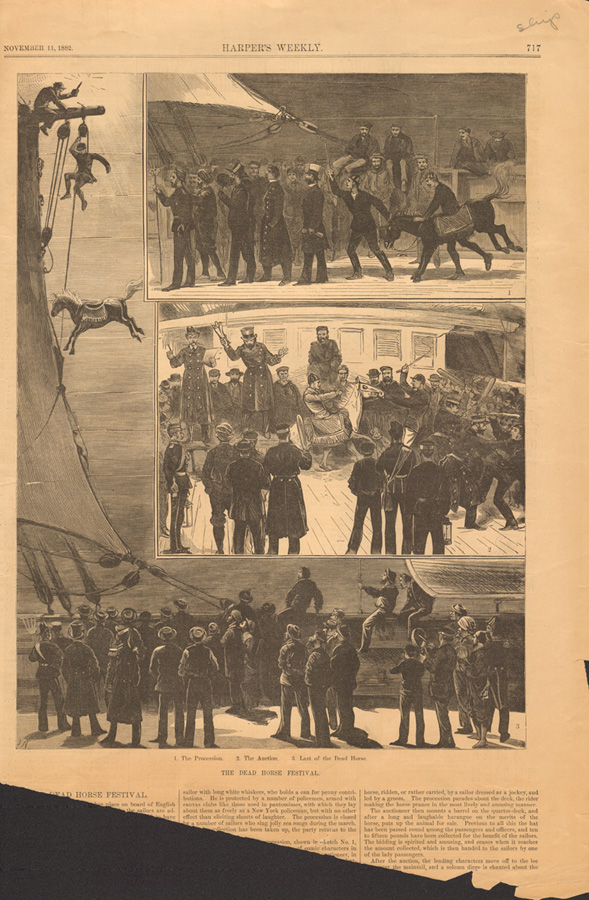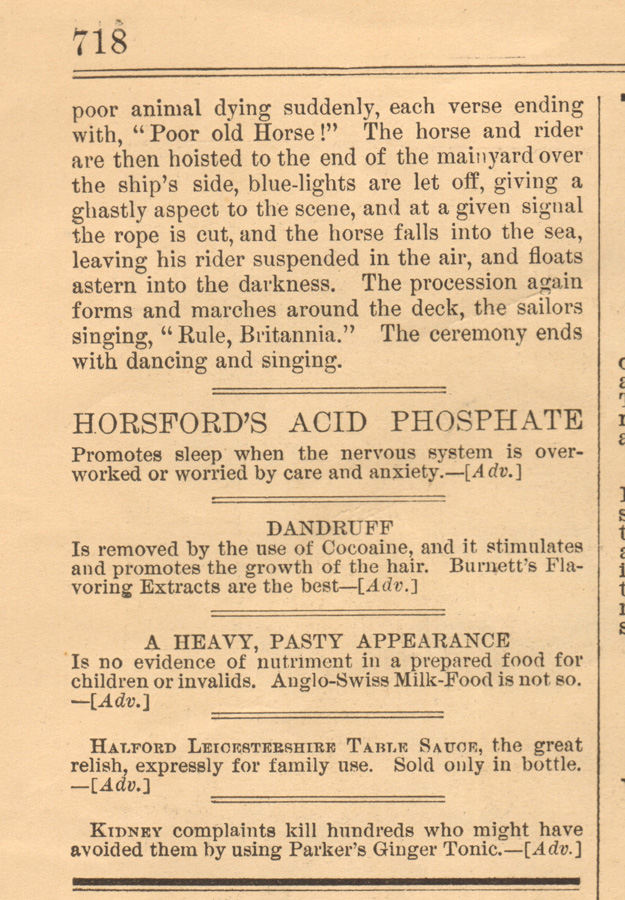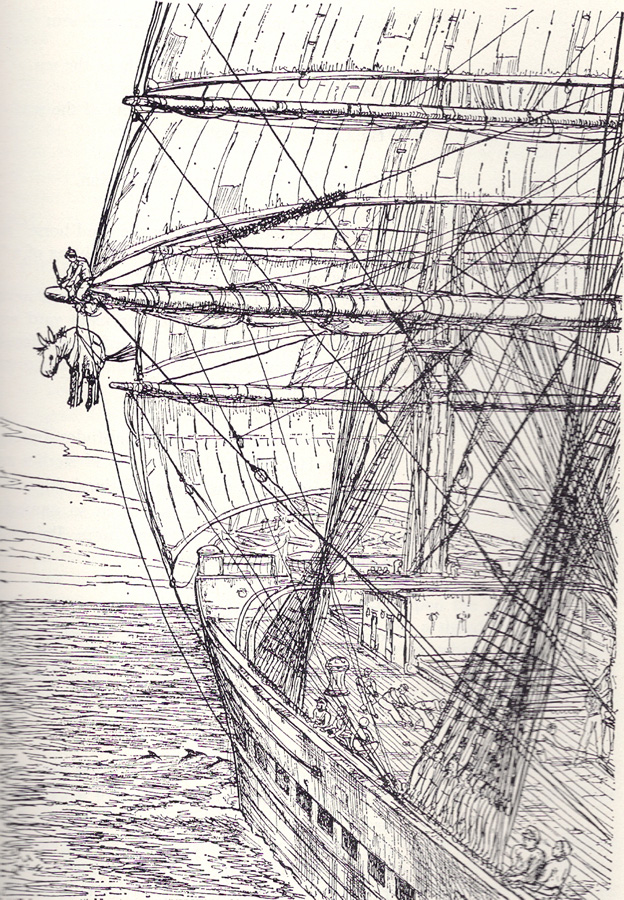While spending some time going through a stack of Harper’s Weekly articles we have, I found some really interesting subjects. The one that stuck out the most was titled The Dead Horse Festival. First mistake was looking at the imagery before reading the article. I thought they were throwing a real horse from the ship; they aren’t.


There is some text missing from ours, but I was able to find it online. The first two columns read:
“This amusing ceremony often takes places on board of English ships sailing to Australia. On joining a ship the sailors are advanced a month’s wages, with which they are supposed to have bought a horse, which dies at the end of four weeks. A dummy steed is prepared in the forecastle, the body being an old flour barrel, the neck and head of canvas, stuffed with straw and painted. In place of a saddle, a hole is cut throughout the body, large enough to admit the legs of the rider.
About half past seven in the evening a small procession, headed by a man who carries a baton, furnished with a rude imitation of a human face, issues from the forecastle. Following him is a sailor with long white whiskers, who holds a can for penny contributions. He is protected by a number of policemen, armed with canvas clubs like those used in pantomimes, with which they lay about them as freely as New York policemen, but with no other effect the eliciting shouts of laughter. The procession is closed by a number of sailors who sing jolly sea songs during the march. After the collection has been taken up, the party returns to the forecastle.
Shortly afterward a larger procession shown in sketch No. 1, issues from the forecastle, with a number of comic characters in addition to those just mentioned, among them the auctioneer, in frock-coat and tall hat, with a roll of papers in his hands, and attended by a clerk. Immediately after the auctioneer comes the horse, ridden, or rather carried, by a sailor dressed as a jockey, and led by a groom.”
The last few words missing in the third column are “side, near the mainsail”

The origin of this comes from when a sailor would be given a month’s advance when signing on to a ship. This was usually long gone by the time the voyage began, often sent to the sailor’s family. At the end of the first month at sea the sailor would have worked off this debt and begun to earn money, and it appears that this was their way of celebrating. The dead horse is representative of the advance money they had been given and how they were free of that burden.
Running across interesting tidbits like this is what makes history so fun!